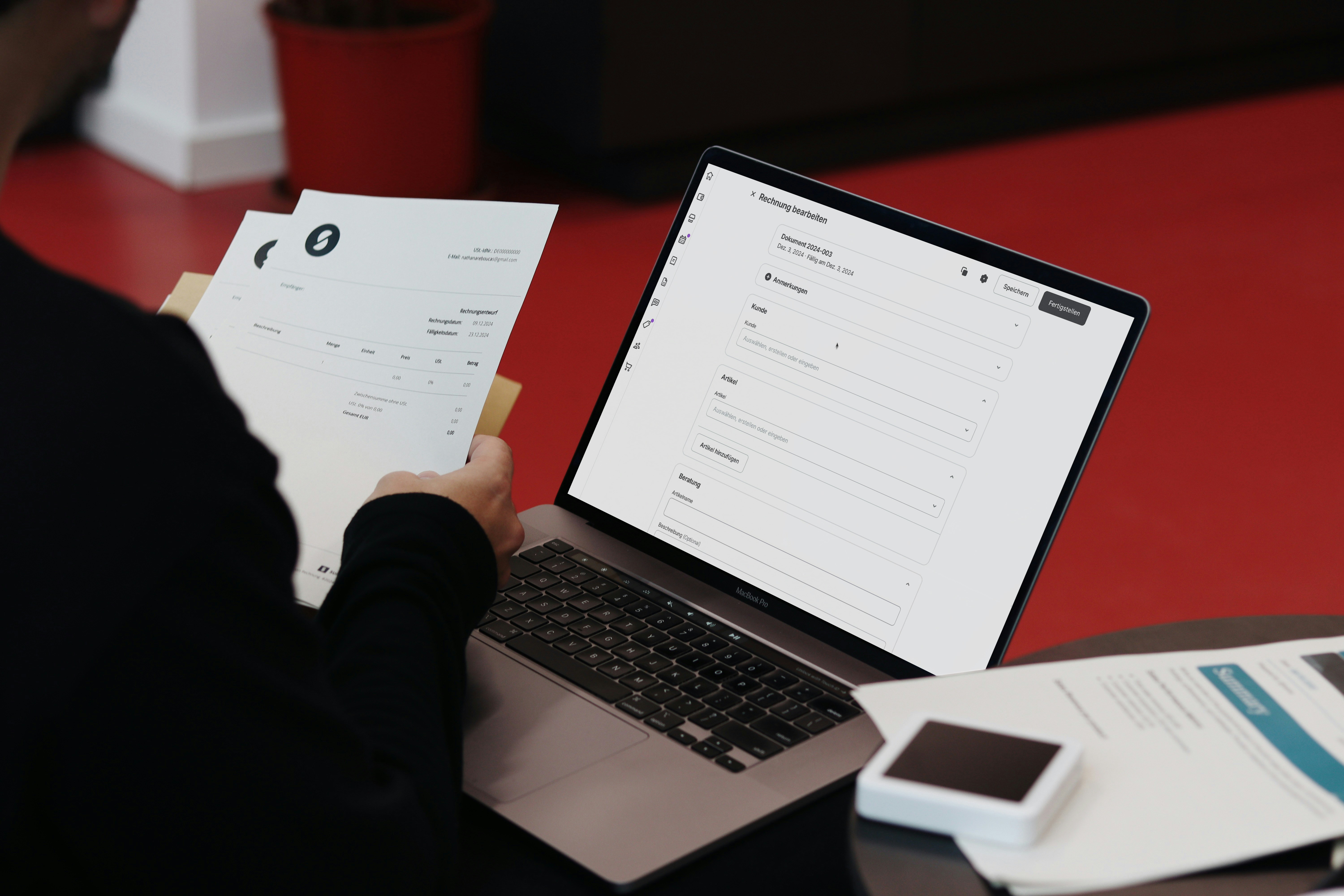
From mid‑2026 every freelancer will need billing software that talks to Hacienda, and soon after they will have to send every B2B invoice as a signed XML file. This guide strips away the jargon so you see the dates, the steps and the tools without digging into the BOE.
It also shows how real‑time VAT reporting and faster payments boost your cash flow.
Quick Q&A
When will e‑invoicing become compulsory? Two stages:
- Verifactu QR + real‑time record: July 1st 2026 for freelancers and autónomos. Companies that pay Corporate Tax switch on January 1st 2026.
- Signed XML e‑invoice (Crea y Crece): 24 months after the final Royal Decree. If the decree lands in December 2024 the mass go‑live would be December 2026; any delay pushes the date into 2027.
Is a PDF enough? Only for Verifactu. Once the Crea y Crece mandate starts you must also deliver a structured XML invoice.
What happens if I ignore the rule? Hacienda may fine you up to €10 000 per bad invoice under Crea y Crece and up to €150-10 000 for faulty Verifactu software.
Electronic invoicing for self‑employed individuals: the essentials
Start now to avoid a last‑minute scramble.
Stage 1 - Verifactu. Real Decreto 1007/2023 forces every billing program to generate a QR code and send each invoice record to AEAT in real time. PDFs are still allowed if the software meets the spec. Mandatory from 1 July 2026 for autónomos.
Stage 2 - Crea y Crece. Ley 18/2022 will replace PDFs with a signed XML (Facturae 3.2.2 or UBL). Large businesses (> €8 million turnover) switch 12 months after the Royal Decree; the rest follow 24 months later. The decree is expected late 2024, so freelancers face a late 2026-2027 window.
Early adoption means smoother cash flow and no fines.
Key mandatory dates
- 1 Jan 2026 - Verifactu mandatory for Corporate‑Tax payers.
- 1 Jul 2026 - Verifactu mandatory for freelancers and autónomos.
Working as an autónomo? Check out our full guide on Autónomo invoicing in Spain.
Technical prerequisites before you issue your first e‑invoice
A valid digital certificate is step one.
Get an FNMT or DNIe certificate. In‑person pickup is free; video issue costs about €3. Verifactu needs the certificate to sign the record. Crea y Crece needs it to sign the XML file.
Invoice data must include series, date, NIFs, tax base, VAT, total and delivery terms. You sign with XAdES‑XL. Send records through the Verifactu API and deliver XML via Peppol or FACeB2B.
Step‑by‑step: generate, send and store an e‑invoice
Follow these six moves and you are compliant.
- Set a series and date. Keep numbers sequential. Use a separate series for corrections.
- Fill the data. Good software auto‑fills client details, items and taxes.
- Sign the Verifactu record and the XML file with your FNMT certificate.
- Deliver the XML through FACe, Peppol or your app. Watch for acknowledged or rejected status.
- Report the status to Hacienda via Verifactu within four days.
- Store a readable copy for at least four years even if you change provider.
Need a fast, straightforward way to generate Verifactu‑compliant e‑invoices? Try our e-invoicing tool.
Electronic invoice vs Digital invoice
A digital invoice is a PDF or scan - good for Verifactu if generated by certified software.
An electronic invoice is a structured, signed XML - mandatory under Crea y Crece.
Think of a PDF as a photo and an e‑invoice as a spreadsheet with a checksum.
Sanctions, common mistakes and how to stay compliant
A missing signature can cost €10 000.
Crea y Crece fines: up to €10 000 or 2 % of the deal. Verifactu fines: €150-10 000 per invoice. Errors include bad series, missing signatures, storing invoices for less than four years or non‑certified software.
Stay safe: enable the Verifactu trail, automate series, renew certificates before expiry and test XML in the FACe validator. Kit Digital still covers up to €2 000 of invoicing software for Segment III firms.
Bottom Line
Electronic invoicing for self‑employed individuals is arriving in two clear waves: Verifactu in July 2026, and full XML e‑invoices roughly a year later. Moving early wins you faster payments and smooth SII filing.
Act now: secure your certificate, migrate old PDFs and teach clients what to expect. Electronic invoicing for self‑employed individuals will soon be the rule, not a choice.





